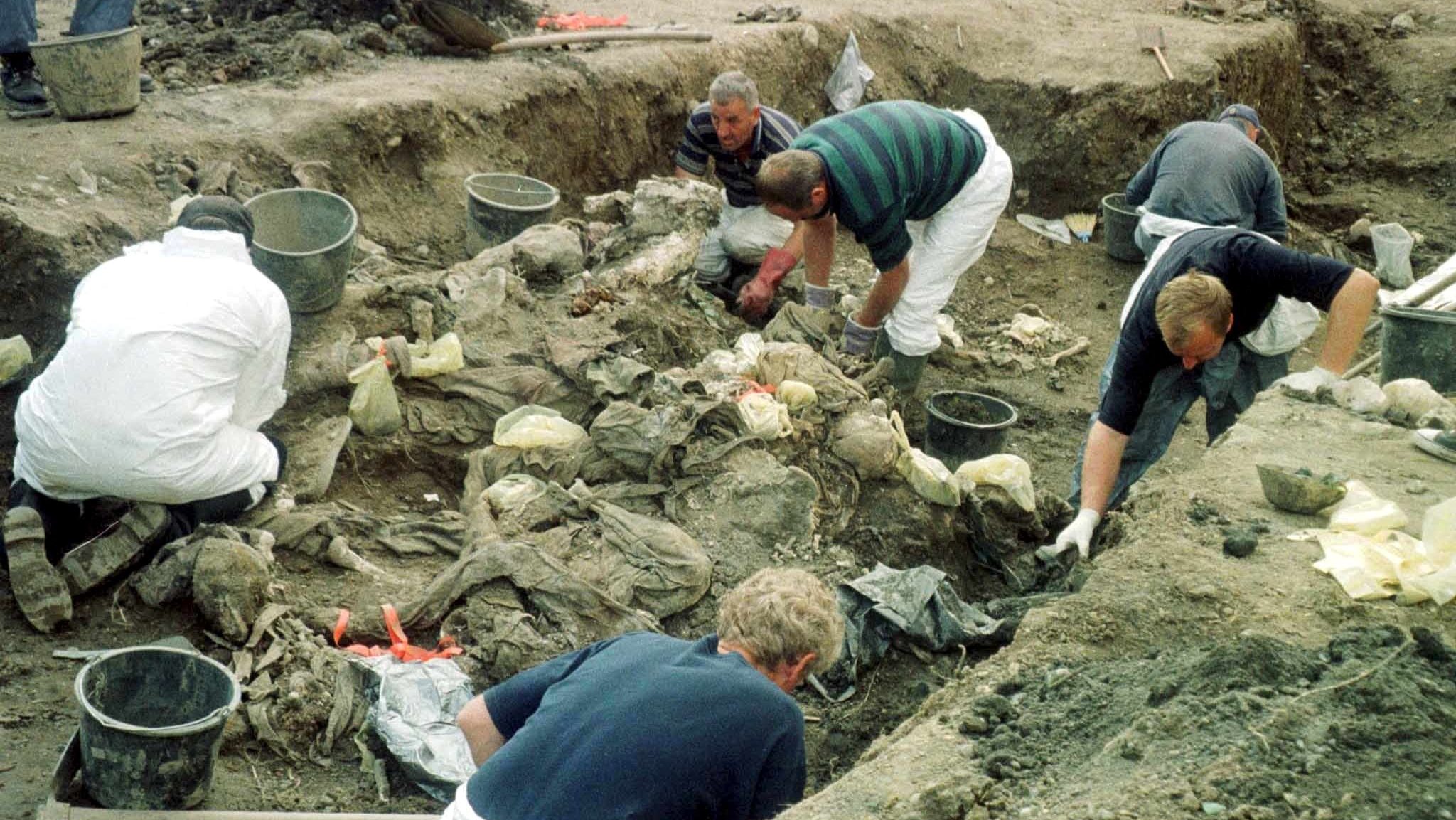This post is also available in: Bosnian
Investigator Marinko Bakovic of the Missing Persons Institute’s field office in Orasje was working at in Bosanska Posavina in 2010 when a mechanical digger hit a landmine, causing it to explode.
“Luckily, I had no physical injuries, but I had psychological disturbances. I developed a stutter that lasted for a certain period of time, but I managed to overcome it,” Bakovic told BIRN.
He underwent intensive medical treatment that lasted around three years and eventually managed to get rid of the speech impediment.
This was not the only incident that Bakovic has witnessed in his time as an investigator searching for the remains of war victims in Bosnia.
“A colleague of mine lost a part of his foot, while two others got sepsis while assisting in exhumations. Luckily there were no fatalities,” Bakovic recalled.
A lack of adequate equipment and exhumations on inaccessible, contaminated and dangerous terrains have contributed to the physical and mental problems that investigators have suffered.
“Diseases and work injuries have happened to investigators since the end of the war, when the search for the missing persons in our country began, up until today,” said Lejla Cengic, the spokesperson for the Missing Persons Institute.
“Fortunately, it has not taken place on a large scale considering that the search for the missing persons has been going on for more than two decades, that numerous mass and individual graves have been discovered in that period and that nearly three-quarters of the total number of the missing persons have been found so far,” Cengic added.
The last case of an investigator contracting a disease – an abdominal infection – was recorded in 2013 during an exhumation at the Tomasica mass grave in the Prijedor area, where the remains of more than 400 people have been found.
“Kemal Draganovic, an investigator with the former Federal Commission for Missing Persons, which was a predecessor to the Missing Persons Institute of Bosnia and Herzegovina, got sepsis during an exhumation of victims from a mass grave in the Kozarac area because the victims’ remains were in nylon bags in the phase of saponification,” Cengic recalled.
She also said that Sejo Koso, who worked for the Federal Commission for the Missing Persons, lost his leg in a landmine explosion.
According to the Missing Persons Institute, more than 30,000 people were considered missing in Bosnia and Herzegovina after the end of the conflict, and the remains of more than 7,000 persons are still being sought.
Cengic pointed out that the Missing Persons Institute’s investigators have demonstrated commitment, perseverance and personal courage regardless of the difficulties they have faced over the years.
Investigator Bakovic said that despite the problems he has encountered, he is proud of his work.
“Our job is to search for the missing persons, to protect the victims. It entails a lot of sacrifices. You must be strong enough to be able to process all that so it does not leave scars on you,” he explained.
“Naturally, none of us can eliminate our emotions completely. We are all vulnerable, so it probably has a certain impact on people.”



